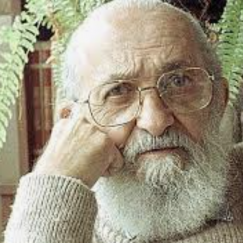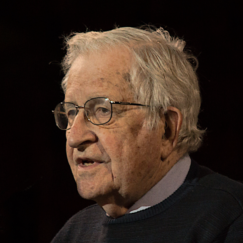All illusions are potential ways of ordering reality. The goal of criticism should therefore be not to destroy illusions but to make us more sensitive to their workings and their complexity.
Bio/Short Description
S. I Hayakawa was a Canadian-born American academic and politician of Japanese ancestry. He was an English professor, and served as president of San Francisco State University and then as United States Senator from California from 1977 to 1983. Born in Vancouver, British Columbia, Hayakawa earned graduate degrees in English from McGill University and University of Wisconsin–Madison. Professionally, Hayakawa was a linguist, psychologist, semanticist, teacher and writer. His first book on semantics, Language in Thought and Action, was published in 1949 as an expansion of the earlier work, Language in Action, written since 1938 and published in 1941 to be a Book-of-the-Month Club selection. This book, still in print, helped popularize Alfred Korzybski's general semantics, a set of ideas about the relationship between language and social behavior.
HOW THEY INFLUENCED YOU?
External Links
Other Grandparents
 Marlon Posted By: Renee HobbsOn:11/29/2023 - 00:56
Marlon Posted By: Renee HobbsOn:11/29/2023 - 00:56
 danahPosted By: Yonty FriesemOn:01/06/2023 - 07:34
danahPosted By: Yonty FriesemOn:01/06/2023 - 07:34
 PaoloPosted By: Renee HobbsOn:07/22/2021 - 16:11
PaoloPosted By: Renee HobbsOn:07/22/2021 - 16:11
 NoamPosted By: Renee HobbsOn:05/23/2020 - 03:48
NoamPosted By: Renee HobbsOn:05/23/2020 - 03:48
 Jon Posted By: Renee HobbsOn:05/10/2020 - 00:12
Jon Posted By: Renee HobbsOn:05/10/2020 - 00:12



Renee Hobbs
I must have read Language in Thought and Action as an undergraduate, but I don't think it was formally assigned for a course. I found it, probably, in the University of Michigan library or perhaps at the original Border's on State Street. It was a slender, accessibly-written little book and it captured my imagination. Here was a simple explanation of representation-reality dialectic, where the big idea is to understand that "the map is not the territory." Concepts like denotation and connotation, euphemism, synonymy and homonymy helped me consider the power of language in shaping the attention-getting appeal of advertising. It was a natural choice for me in 1985 when I started teaching an introductory course in Human Communication and it was clear to me that students "got" media literacy better when we started with a close look at language. I have re-read this book every five years or so and continue to marvel at its timeless relevance and appeal.